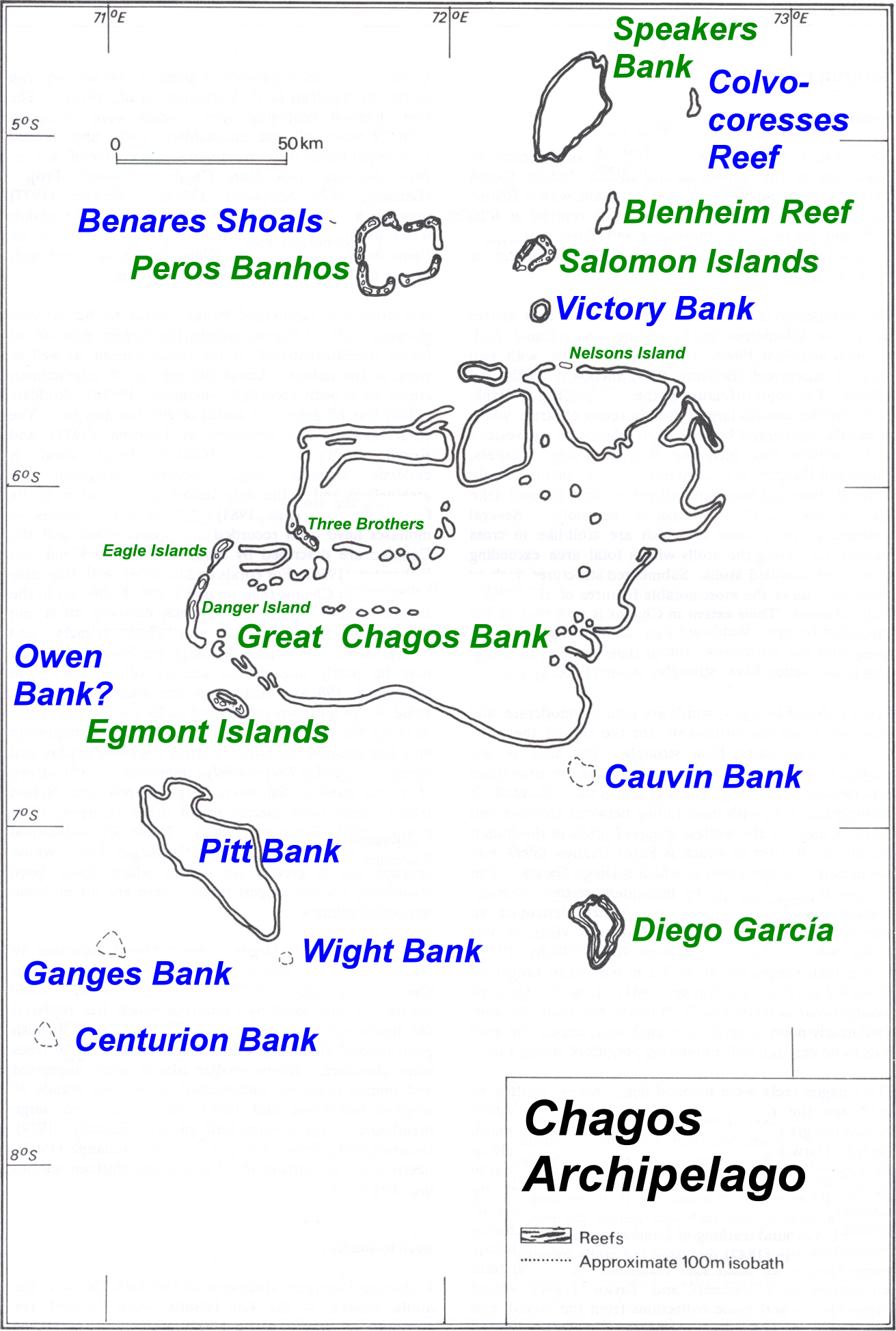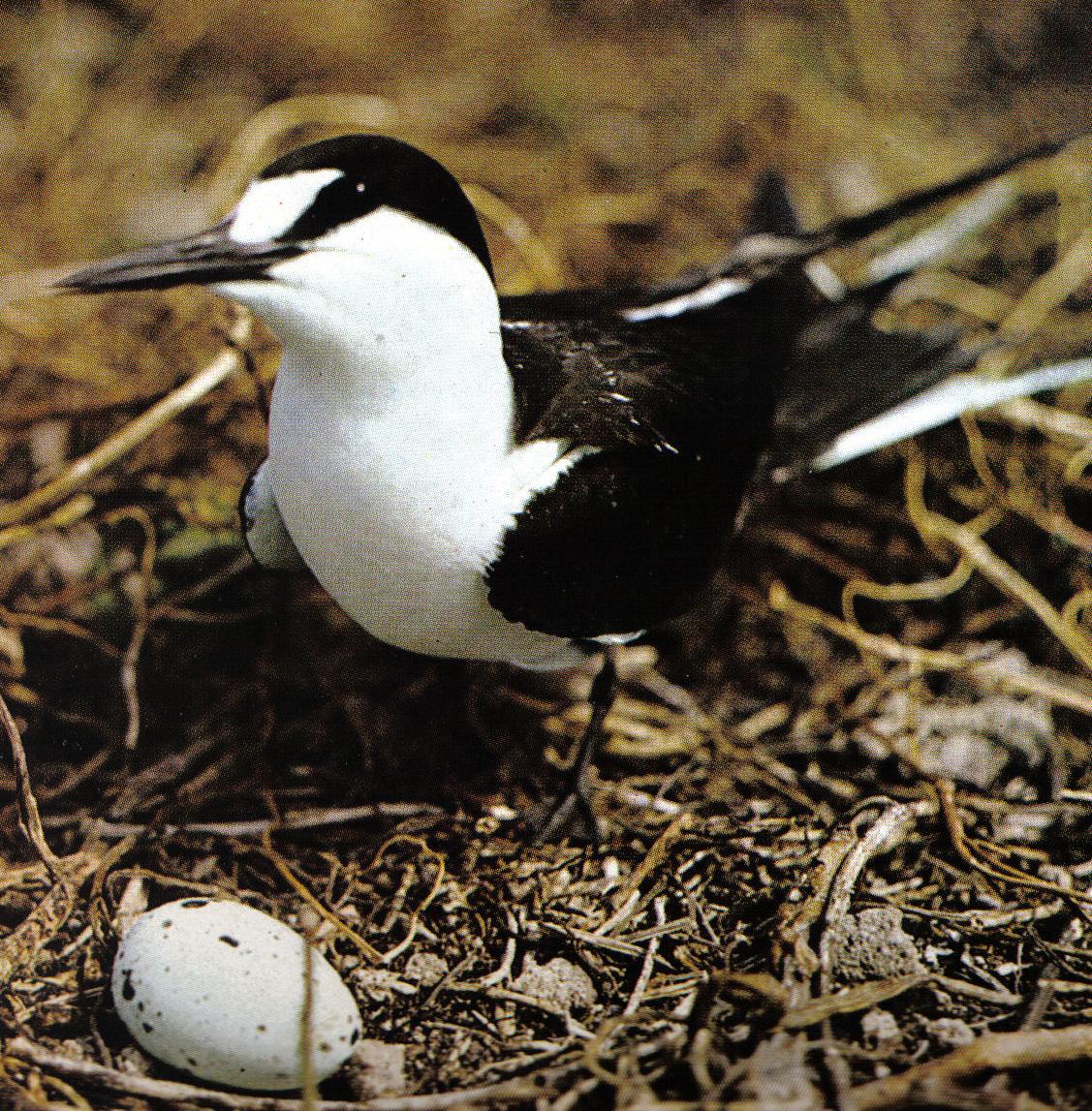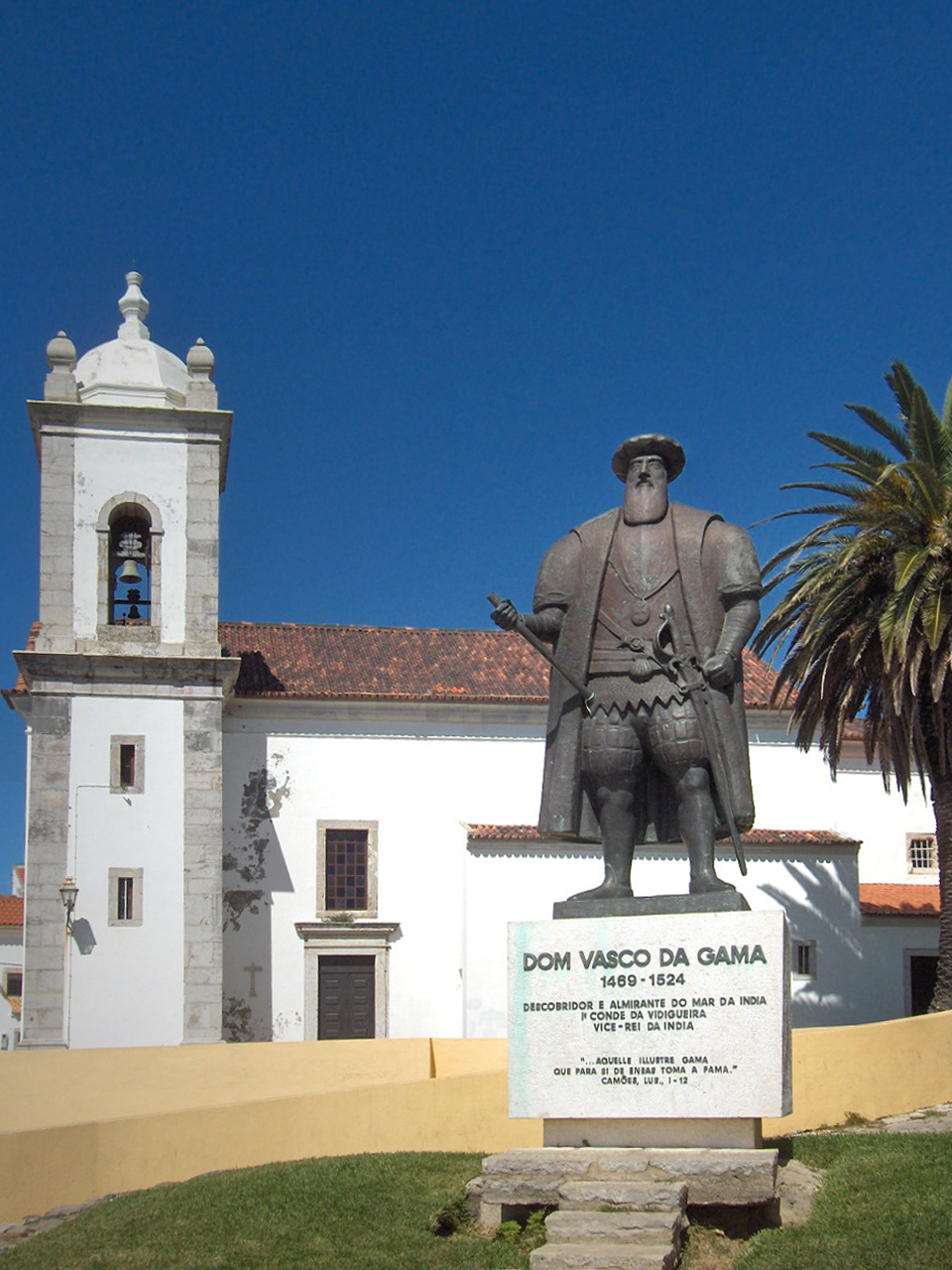|
Three Brothers (islands), Chagos
The Three Brothers are a group of three small coral islands east of Eagle Islands along the central western rim of the Great Chagos Bank, which is the world's largest coral atoll structure, located in the Chagos Archipelago. Islands The individual islands are, from north-west to south-east: * North Brother or Île du Nord (6 ha; 15 acres) * Middle Brother or Île du Milieu (8 ha; 20 acres) * Resurgent Island (1 ha; 2½ acres) * South Brother or Île du Sud (23 ha; 57 acres) History Discovered by the portuguese, by Vasco da Gama. The islands were known as Bassas de Chagos. In 1975 during the Joint Services Expedition to Danger Island (JSDI). The expedition members were taken by RFA Resurgent to Eagle Islands and then by ketch A ketch is a two- masted sailboat whose mainmast is taller than the mizzen mast (or aft-mast), and whose mizzen mast is stepped forward of the rudder post. The mizzen mast stepped forward of the rudder post is what distinguishes the ketch fr .. ... [...More Info...] [...Related Items...] OR: [Wikipedia] [Google] [Baidu] |
Seabirds Nesting On South Brother Island In The Chagos Archipelago
Seabirds (also known as marine birds) are birds that are adapted to life within the marine environment. While seabirds vary greatly in lifestyle, behaviour and physiology, they often exhibit striking convergent evolution, as the same environmental problems and feeding niches have resulted in similar adaptations. The first seabirds evolved in the Cretaceous period, and modern seabird families emerged in the Paleogene. In general, seabirds live longer, breed later and have fewer young than other birds do, but they invest a great deal of time in their young. Most species nest in colonies, which can vary in size from a few dozen birds to millions. Many species are famous for undertaking long annual migrations, crossing the equator or circumnavigating the Earth in some cases. They feed both at the ocean's surface and below it, and even feed on each other. Seabirds can be highly pelagic, coastal, or in some cases spend a part of the year away from the sea entirely. Seabirds an ... [...More Info...] [...Related Items...] OR: [Wikipedia] [Google] [Baidu] |
Island
An island (or isle) is an isolated piece of habitat that is surrounded by a dramatically different habitat, such as water. Very small islands such as emergent land features on atolls can be called islets, skerries, cays or keys. An island in a river or a lake island may be called an eyot or ait, and a small island off the coast may be called a holm. Sedimentary islands in the Ganges delta are called chars. A grouping of geographically or geologically related islands, such as the Philippines, is referred to as an archipelago. There are two main types of islands in the sea: continental and oceanic. There are also artificial islands, which are man-made. Etymology The word ''island'' derives from Middle English ''iland'', from Old English ''igland'' (from ''ig'' or ''ieg'', similarly meaning 'island' when used independently, and -land carrying its contemporary meaning; cf. Dutch ''eiland'' ("island"), German ''Eiland'' ("small island")). However, the spelling of the word ... [...More Info...] [...Related Items...] OR: [Wikipedia] [Google] [Baidu] |
Eagle Islands
Eagle Islands is a group of two islands in the Chagos Archipelago. They are located on the central-western rim of the Great Chagos Bank, which is the world's largest coral atoll structure. Islands With a land area of 2.45 km, Île Aigle is the largest single island of the Great Chagos Bank, and after Diego Garcia the second largest of the Chagos Archipelago. *Eagle Island (Île Aigle) *Sea Cow Island (Île Vache Marine) History There was once a coconut plantation in Ile Aigle, as well as a small settlement of Chagossian plantation workers. But at the time of Commander Robert Moresby's survey of the Chagos, in 1838, this island was populated only occasionally. Not long after the settlement of the Chagos group by the French planters at the end of the 18th century, the tendency was to concentrate the workers on only a few islands from which the plantations were run, like Ile Boddam in the Salomon Atoll. In 1975 during the Joint Services Expedition to Danger Island (JSDI), t ... [...More Info...] [...Related Items...] OR: [Wikipedia] [Google] [Baidu] |
Great Chagos Bank
The Great Chagos Bank, in the Chagos Archipelago, about south of Maldives, is the largest atoll structure in the world, with a total area of . The atoll is administered by the United Kingdom through the British Indian Ocean Territory (BIOT). Islands Despite its enormous size, the Great Chagos Bank is largely a submarine structure. There are only four emerging reefs, mostly located on the western rim of the atoll, except for lonely Nelson Island, which lies wholly isolated in the middle of the northern fringe. These reefs have eight individual low and sandy islands, with a total land area of about . All islands and their surrounding waters are a Strict Nature Reserve since 1998. The total length of the eastern and southern expanses of the bank, as well as the reefs in its central area are wholly submerged. The islands of the Great Chagos Bank, starting clockwise from the south, are: * Danger Island (slightly more than long from North to South, by wide, land area , vege ... [...More Info...] [...Related Items...] OR: [Wikipedia] [Google] [Baidu] |
Atoll
An atoll () is a ring-shaped island, including a coral rim that encircles a lagoon partially or completely. There may be coral islands or cays on the rim. Atolls are located in warm tropical or subtropical oceans and seas where corals can grow. Most of the approximately 440 atolls in the world are in the Pacific Ocean. Two different, well-cited models, the subsidence and antecedent karst models, have been used to explain the development of atolls.Droxler, A.W. and Jorry, S.J., 2021. ''The Origin of Modern Atolls: Challenging Darwin's Deeply Ingrained Theory.'' ''Annual Review of Marine Science'', 13, pp.537-573. According to Charles Darwin's ''subsidence model'', the formation of an atoll is explained by the subsidence of a volcanic island around which a coral fringing reef has formed. Over geologic time, the volcanic island becomes extinct and eroded as it subsides completely beneath the surface of the ocean. As the volcanic island subsides, the coral fringing reef becomes a ... [...More Info...] [...Related Items...] OR: [Wikipedia] [Google] [Baidu] |
Chagos Archipelago
The Chagos Archipelago () or Chagos Islands (formerly the Bassas de Chagas, and later the Oil Islands) is a group of seven atolls comprising more than 60 islands in the Indian Ocean about 500 kilometres (310 mi) south of the Maldives archipelago. This chain of islands is the southernmost archipelago of the Chagos–Laccadive Ridge, a long submarine mountain range in the Indian Ocean. In its north are the Salomon Islands, Nelson's Island and Peros Banhos; towards its south-west are the Three Brothers, Eagle, Egmont and Danger Island(s); southeast of these is Diego Garcia, by far the largest island. All are low-lying atolls, save for a few extremely small instances, set around lagoons. The Chagos Islands had been home to the native Chagossians, a Bourbonnais Creole-speaking people, until the United Kingdom expelled them from the archipelago at the request of the United States between 1967 and 1973 to allow the United States to build a military base on Diego Garcia. Since 197 ... [...More Info...] [...Related Items...] OR: [Wikipedia] [Google] [Baidu] |
North Brother (Chagos Bank)
North Brother, also known as Île du Nord, is a round 6 ha coral island on the Great Chagos Bank atoll of the Chagos Archipelago in the British Indian Ocean Territory. It is one of the three islands in the Three Brothers group on the western side of the atoll, and forms part of the Chagos Archipelago strict nature reserve. It has been identified as an Important Bird Area by BirdLife International because of its significance as a breeding site for 20,000 seabirds, notably Audubon's shearwater Audubon's shearwater (''Puffinus lherminieri'') is a common tropical seabird in the petrel family. Sometimes known as the dusky-backed shearwater,Carboneras (1992) the specific epithet honours the French naturalist Félix Louis L'Herminier. Cer ...s of which 420 pairs were recorded in a 2004 survey. References Important Bird Areas of the British Indian Ocean Territory Seabird colonies Chagos Archipelago Nature reserves {{BritishIndianOcean-geo-stub ... [...More Info...] [...Related Items...] OR: [Wikipedia] [Google] [Baidu] |
Middle Brother (Chagos Bank)
Middle Brother, also known as Île du Milieu, is an 8-hectare coral island on the Great Chagos Bank atoll of the Chagos Archipelago in the British Indian Ocean Territory. It is one of the three islands in the Three Brothers group on the western side of the atoll, and forms part of the Chagos Archipelago strict nature reserve. It has been identified as an Important Bird Area by BirdLife International for its significance as a breeding site for seabirds, notably sooty tern The sooty tern (''Onychoprion fuscatus'') is a seabird in the family Laridae. It is a bird of the tropical oceans, returning to land only to breed on islands throughout the equatorial zone. Taxonomy The sooty tern was described by Carl Linnaeu ...s, of which 12,500 pair were recorded in a 2004 survey. References Important Bird Areas of the British Indian Ocean Territory Seabird colonies Chagos Archipelago Nature reserves {{BritishIndianOcean-geo-stub ... [...More Info...] [...Related Items...] OR: [Wikipedia] [Google] [Baidu] |
South Brother (Chagos Bank)
South Brother, also known as Île du Sud, is a 23 ha coral island on the Great Chagos Bank atoll of the Chagos Archipelago in the British Indian Ocean Territory. It is one of the three islands in the Three Brothers group on the western side of the atoll, and forms part of the Chagos Archipelago strict nature reserve. It has been identified as an Important Bird Area by BirdLife International because of its significance as a breeding site for seabirds, including brown noddies The brown noddy or common noddy (''Anous stolidus'') is a seabird in the family Laridae. The largest of the noddies, it can be told from the closely related black noddy by its larger size and plumage, which is dark brown rather than black. The b ... (with 6100 breeding pairs recorded in a 2004 survey) and lesser noddies (7300 pairs). References Important Bird Areas of the British Indian Ocean Territory Seabird colonies Chagos Archipelago Nature reserves {{BritishIndianOcean-geo-stub ... [...More Info...] [...Related Items...] OR: [Wikipedia] [Google] [Baidu] |
Vasco Da Gama
Vasco da Gama, 1st Count of Vidigueira (; ; c. 1460s – 24 December 1524), was a Portuguese explorer and the first European to reach India by sea. His initial voyage to India by way of Cape of Good Hope (1497–1499) was the first to link Europe and Asia by an ocean route, connecting the Atlantic and the Indian oceans. This is widely considered a milestone in world history, as it marked the beginning of a sea-based phase of global multiculturalism. Da Gama's discovery of the sea route to India opened the way for an age of global imperialism and enabled the Portuguese to establish a long-lasting colonial empire along the way from Africa to Asia. The violence and hostage-taking employed by da Gama and those who followed also assigned a brutal reputation to the Portuguese among India's indigenous kingdoms that would set the pattern for western colonialism in the Age of Exploration. Traveling the ocean route allowed the Portuguese to avoid sailing across the highly disputed Medit ... [...More Info...] [...Related Items...] OR: [Wikipedia] [Google] [Baidu] |
Joint Services
The British Armed Forces, also known as His Majesty's Armed Forces, are the military forces responsible for the defence of the United Kingdom, its Overseas Territories and the Crown Dependencies. They also promote the UK's wider interests, support international peacekeeping efforts and provide humanitarian aid. Since the formation of the Kingdom of Great Britain in 1707 (later succeeded by the United Kingdom), the British Armed Forces have seen action in a number of major wars involving the world's great powers, including the Seven Years' War, the American Revolutionary War, the Napoleonic Wars, the 1853–1856 Crimean War, the First World War, and the Second World War. Britain's victories in most of these decisive wars, allowed it to influence world events and establish itself as one of the world's leading military and economic powers. As of October 2022, the British Armed Forces consist of: the Royal Navy, a blue-water navy with a fleet of 72 commissioned ships, together ... [...More Info...] [...Related Items...] OR: [Wikipedia] [Google] [Baidu] |
Danger Island, Great Chagos Bank
Danger Island is the westernmost and the southernmost island of the Great Chagos Bank, which is the world's largest coral atoll structure, located in the Chagos Archipelago in the Indian Ocean. Description It is a 2 km (1.24 m) long and flat island with a maximum width of , covered with tall coconut trees. Its name in all likelihood derives from the lack of a safe anchorage, which rendered every visit to this island dangerous for the ship and crew. The closest land is Sea Cow Island, the southernmost of the Eagle Islands which lies to the NNE. History There was never a permanent settlement on Danger Island, even at the time that the Chagos were inhabited (between the mid-18th and mid-20th centuries). However, occasionally plantation workers from other islands would be brought to this island to collect coconuts. In 1975 there was an expedition to Danger Island by the Joint Services (JSDI). The expedition members were taken by RFA Resurgent to Eagle Islands and then by ketch an ... [...More Info...] [...Related Items...] OR: [Wikipedia] [Google] [Baidu] |







